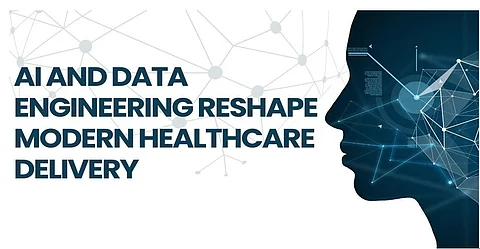

Madhukar Dharavath, a healthcare technology expert from the USA, has developed a research paper on how artificial intelligence, predictive analytics, and data engineering are transforming healthcare systems. His technical analysis reveals how these technologies are transforming patient care and operational efficiency, thereby significantly improving clinical outcomes and resource utilization across various healthcare settings. This study basically provides information regarding how such advanced technologies are transforming healthcare delivery systems essentially into more precise, efficient, and patient-centered care models.
Data volume in health organizations is unprecedented at 44 zettabytes by 2024, covering up 30% of the world's data. Modern hospitals process an average of 50 terabytes of patient data per year. With electronic health records, the data generated per day in a facility has reached 665GB. It is such an enormous data ecosystem requiring highly advanced engineering frameworks that can handle all the variety in sources and complexity of integration requirements. Advanced data management systems have therefore enabled healthcare providers to process and analyze the information much better than before, leading to better decisions on patient care. Advanced data architecture and cloud-based solutions have revolutionized the way data is stored and accessed, while AI-powered analytics tools help healthcare providers make meaningful insights from this vast information repository.
Advanced predictive analytics implementations have been very successful. For instance, it has resulted in a 67% reduction in hospital-acquired infections and a 45% decrease in readmission rates. This technology provides about 850,000 patient contacts daily in integrated health networks, where the longitudinal complex data of patients are analyzed by applying feature engineering processes and, consequently, accuracy of standardization can be up to 94.3%. The complex systems with such technologies recognize the pattern or predict something that might influence health in its earlier stage, preventing it from turning into a crisis situation, thus modifying the approaches for preventive care. The integration of predictive models with real-time patient monitoring has enabled healthcare providers to intervene proactively, while continuous learning algorithms enhance prediction accuracy through ongoing data analysis.
Applications of deep learning in medical images have transformed the way analysis is carried out, as more than 240 million medical images are processed annually. Lung nodule detection has been demonstrated with 89.5% sensitivity and 91.2% specificity rates. This time reduced diagnostics has lowered by 61.8%, with the error rate very much within a manageable limit, in all domains of medicine. The implementation of AI-based diagnosis tools allows for the earlier discovery and treatment of patients during their disease, ensuring drastically better outcomes for the patient.
Edge computing is incredibly powerful to enhance patient monitoring capabilities. Now, the delay of data processing from 5.6 seconds to as low as 15 milliseconds. In today's intensive care units, every patient is being processed with 1,000 clinical measurements per second, whereas dynamic risk scoring algorithms are utilizing 92 unique clinical factors every 30 seconds with 96.8% sensitivity in detecting deteriorating patients. This groundbreaking approach enables health care professionals to act immediately in case of a shift in the conditions of the patients to possibly save patients by acting rapidly.
Today, AI models are reviewing over 5,000 clinical variables per patient that include genomic information and environmental elements to provide precision suggestions for personalized therapy with 89.6% accuracy. Predictive algorithms for response to drugs have been outstandingly successful, with as much as 52% minimization of adverse reactions to drugs because of customized dosing recommendations. The high-end systems, such as those discussed above, have changed the game of treatment planning since healthcare providers can now create very targeted therapies for each patient.
Healthcare organizations face enormous technical challenges. Data quality issues affect 79% of AI installations. Integration complexity remains a challenge since every institution manages an average of 12.5 different clinical systems. The security frameworks process an average of 3.8 million protected health information components daily, demanding strong privacy protection measures. In the face of these challenges, healthcare providers are innovating to develop sophisticated solutions that ensure secure and efficient data management.
These technological advancements have led to a change from reactive to proactive care models, in which automated systems process millions of data points to predict and prevent health issues before they escalate. Organizations that implement these technologies report a marked improvement in resource allocation, patient outcomes, and operational efficiency. The AI and data analytics are continuously evolving and promise even more sophisticated solutions for healthcare delivery and patient care management.
In his concluding analysis, Madhukar Dharavath emphasizes that with the successful integration of these technologies, healthcare organizations are better prepared to meet patient care demands while remaining cost-effective and operationally efficient. The future of healthcare delivery is going to continue to be molded by advancements in data engineering, predictive analytics, and artificial intelligence, which promise better patient outcomes and more efficient healthcare systems in the world. These technological innovations mark a turning point in healthcare, promising a future where data-driven decisions and AI-powered solutions work together to enhance the quality of patient care.
